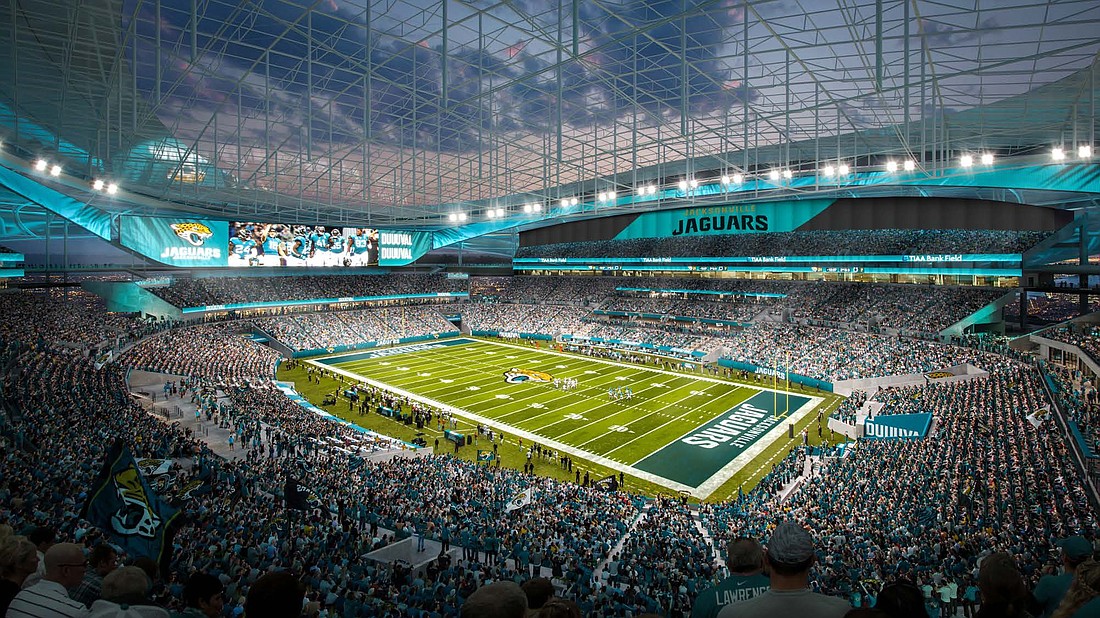
In their first public review of the proposed stadium deal between the city of Jacksonville and the Jacksonville Jaguars, City Council members sought details June 5 on such issues as the number of games the team would be required to play at home and how the city’s proposed funding mechanism for the new stadium would affect pension funds for city employees.
In a workshop at City Hall, Council members met with their auditors along with city officials and team administrators to begin parsing the $1.4 billion agreement to transform EverBank Stadium into the Jaguars’ “Stadium of the Future.”
The deal started off smoothly as the workshop ended nearly two hours early and an optional three-hour follow-up meeting June 6 was canceled.